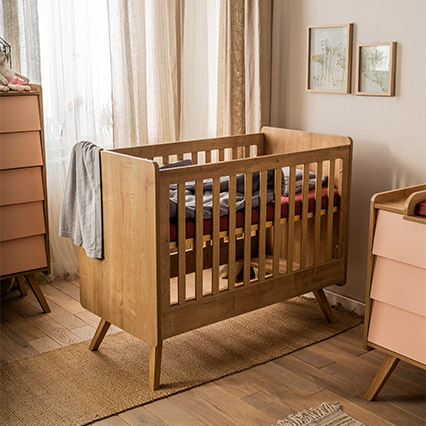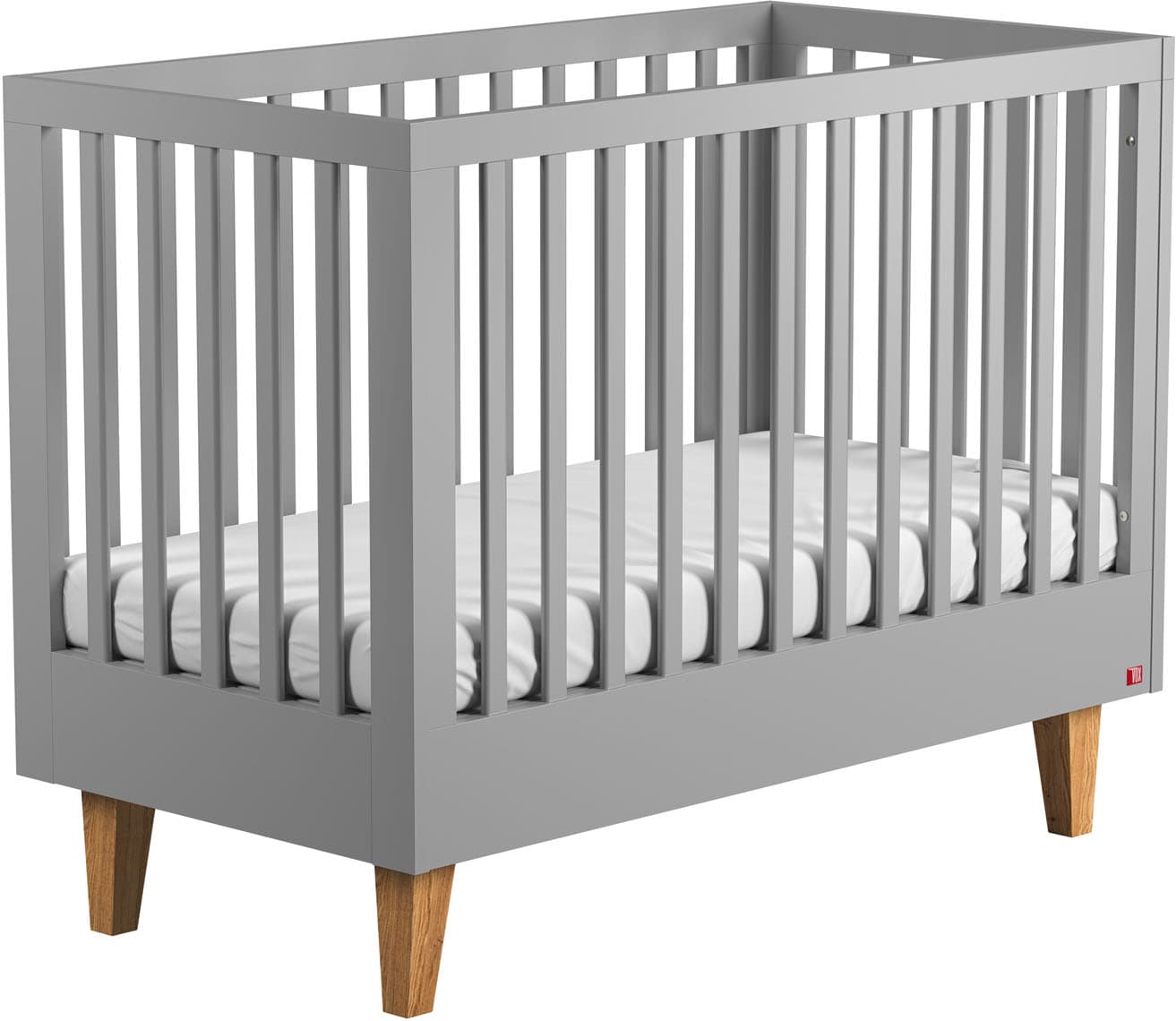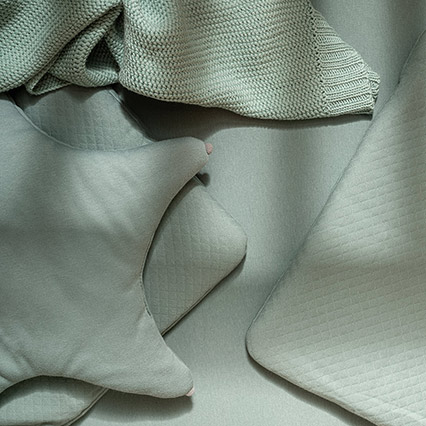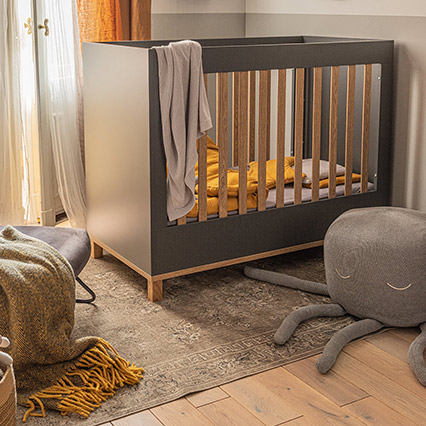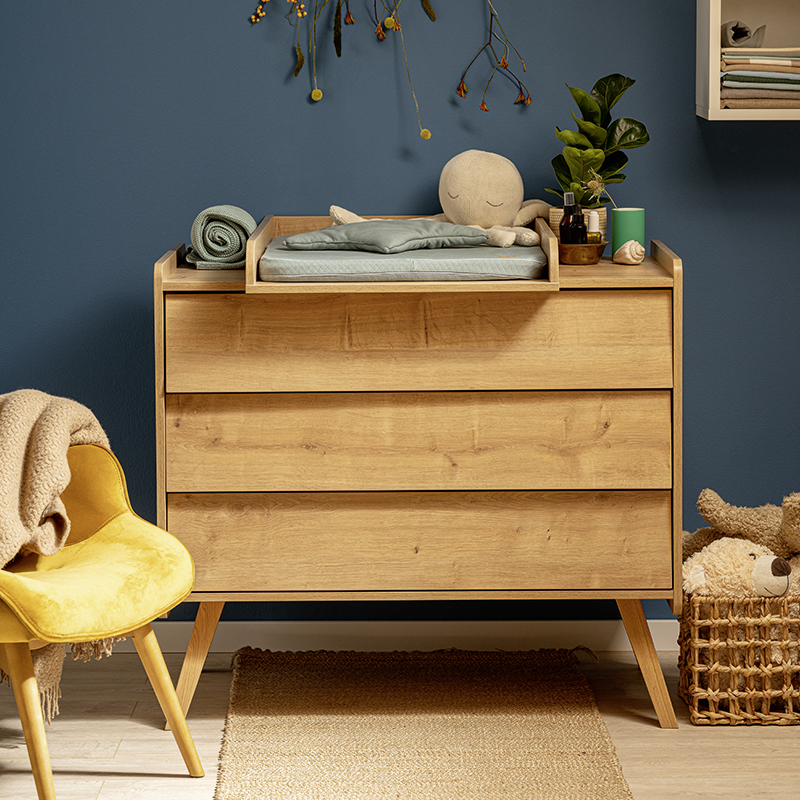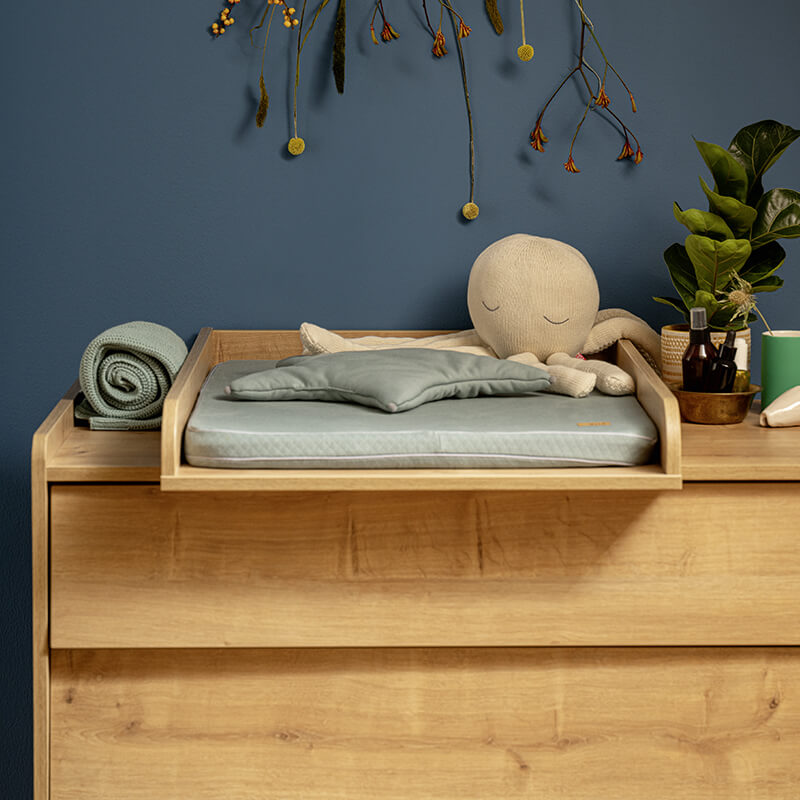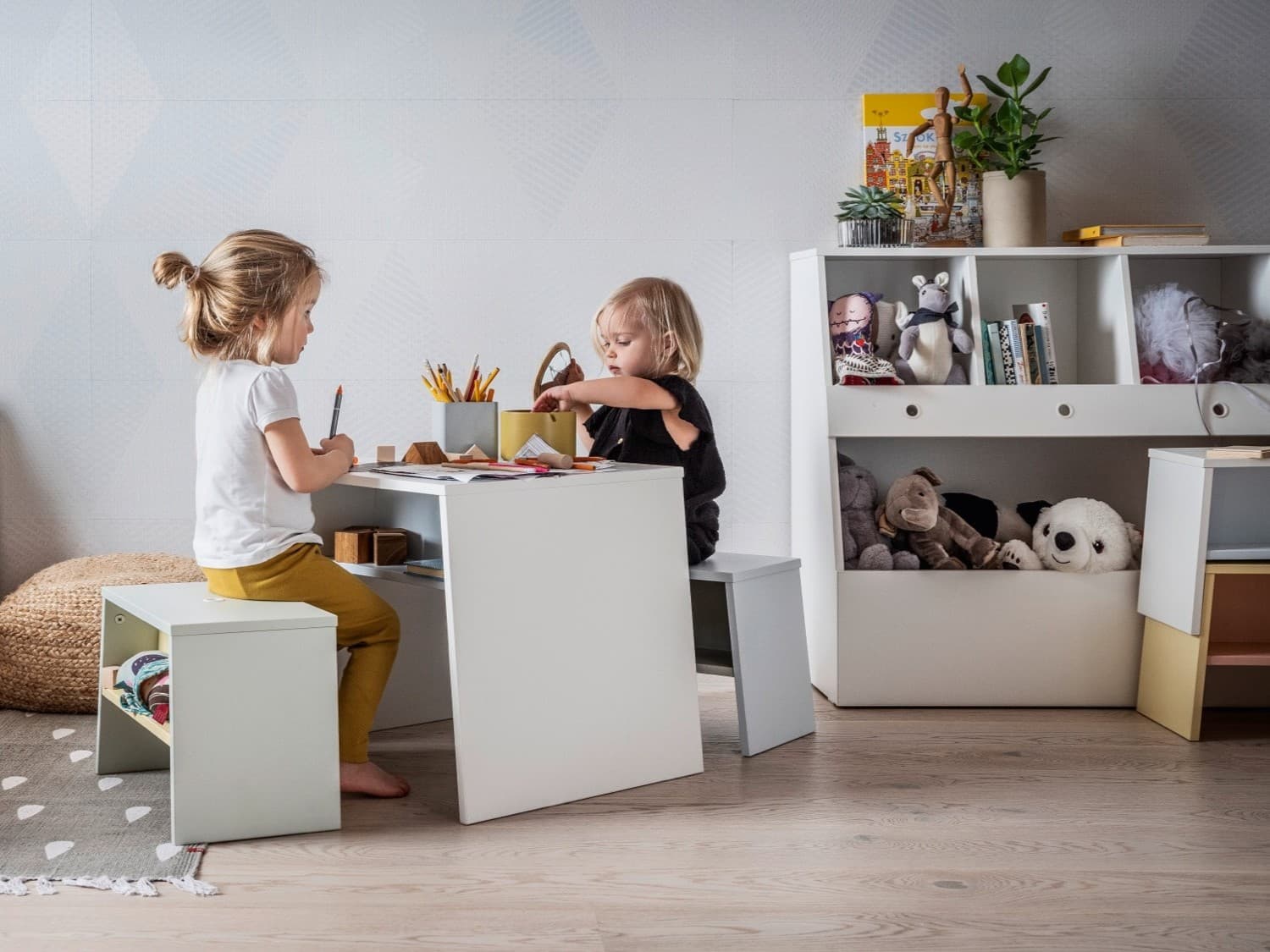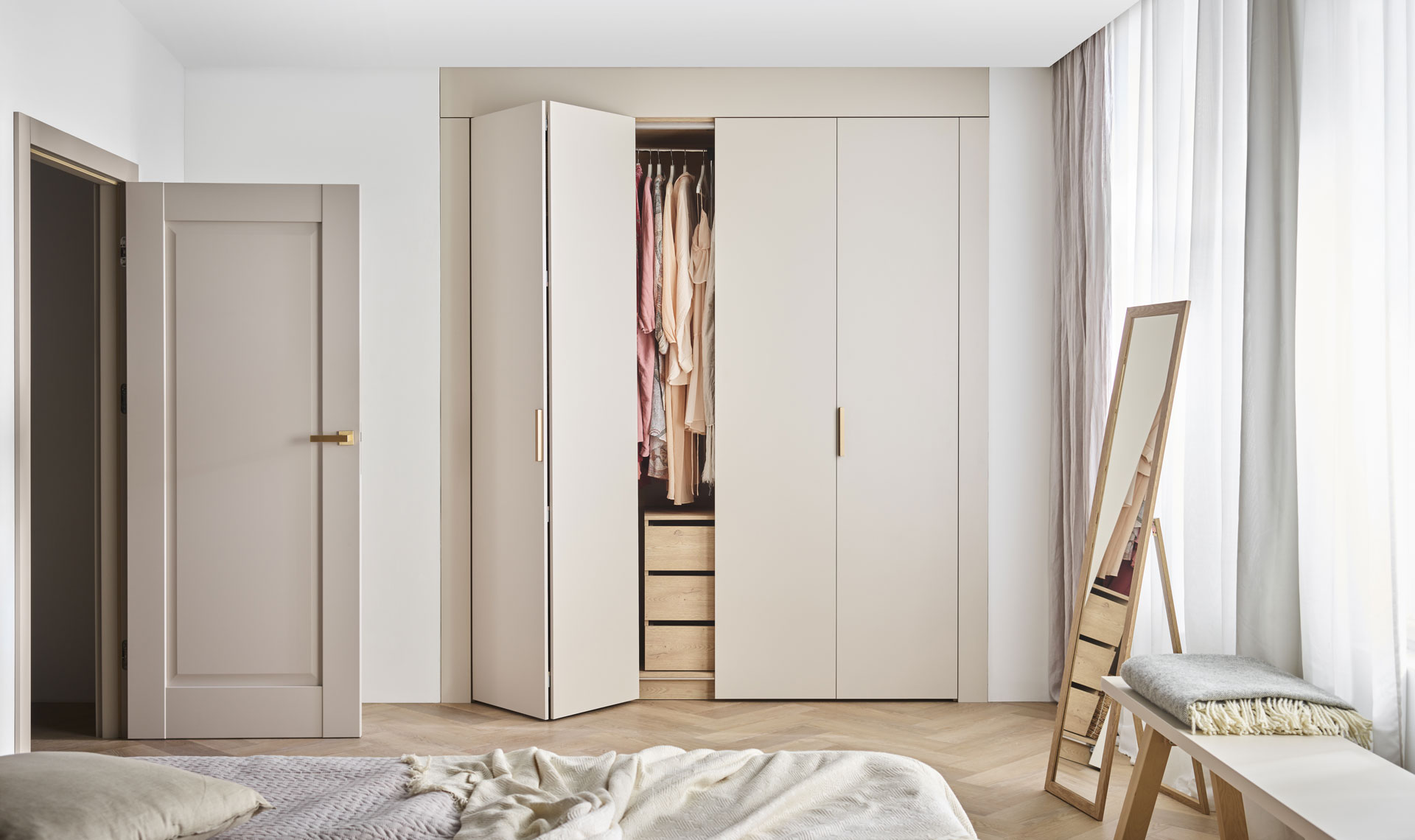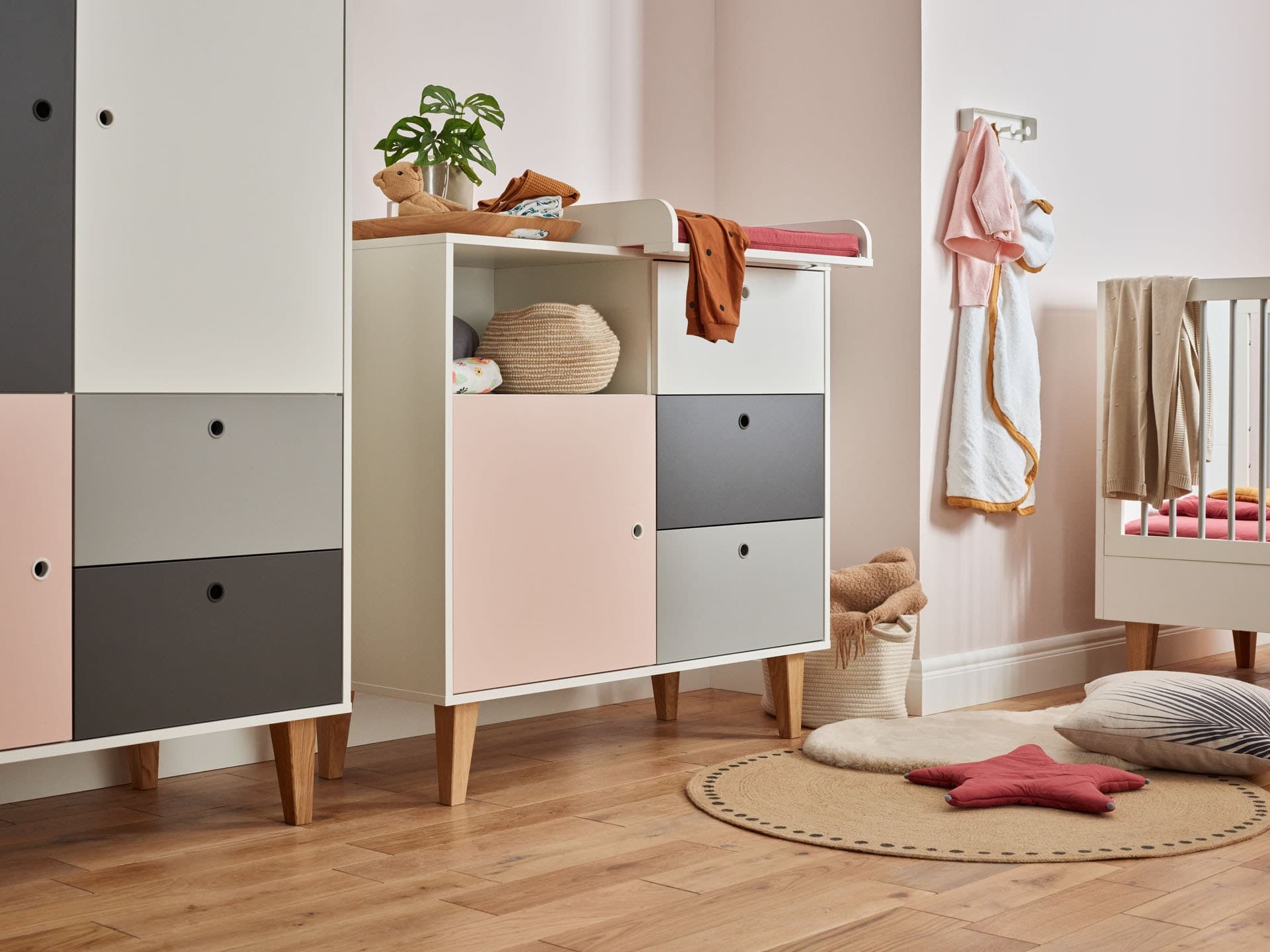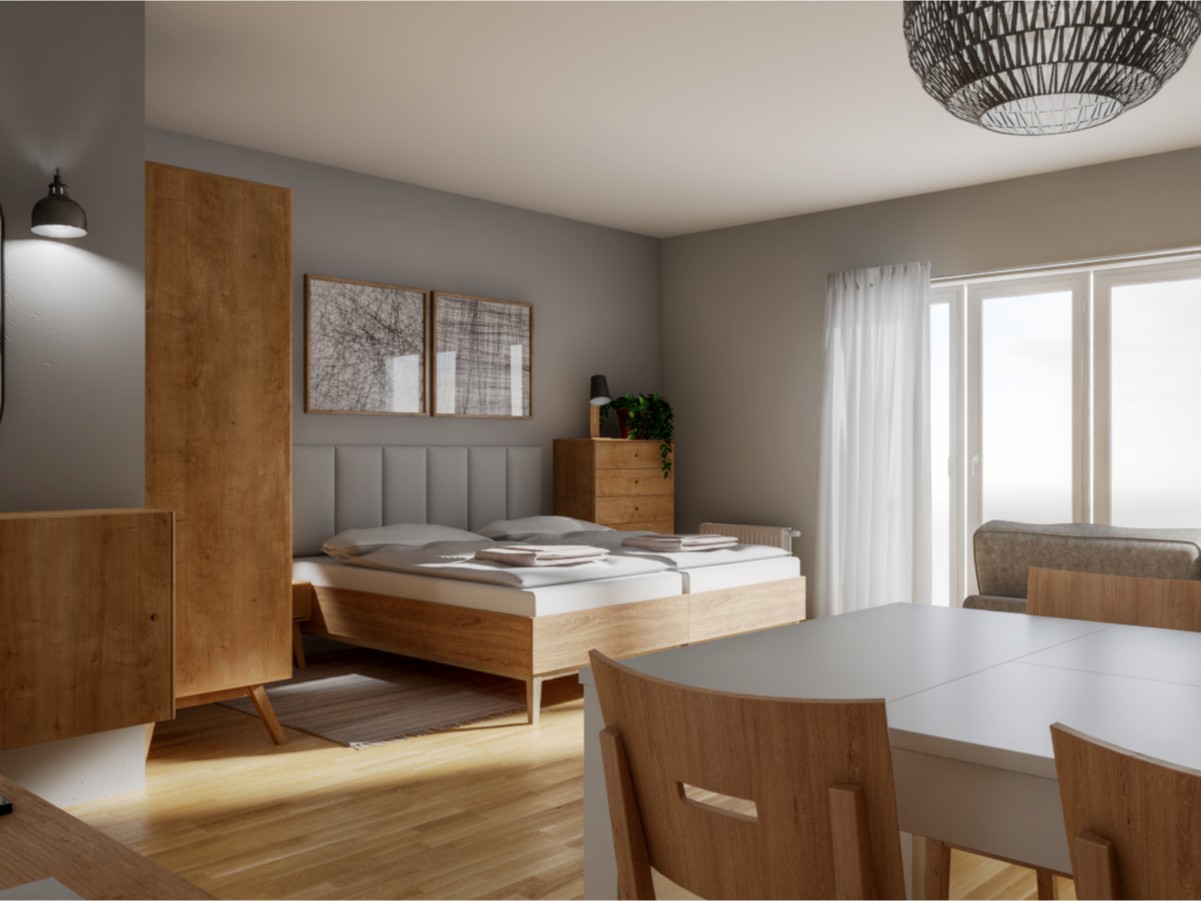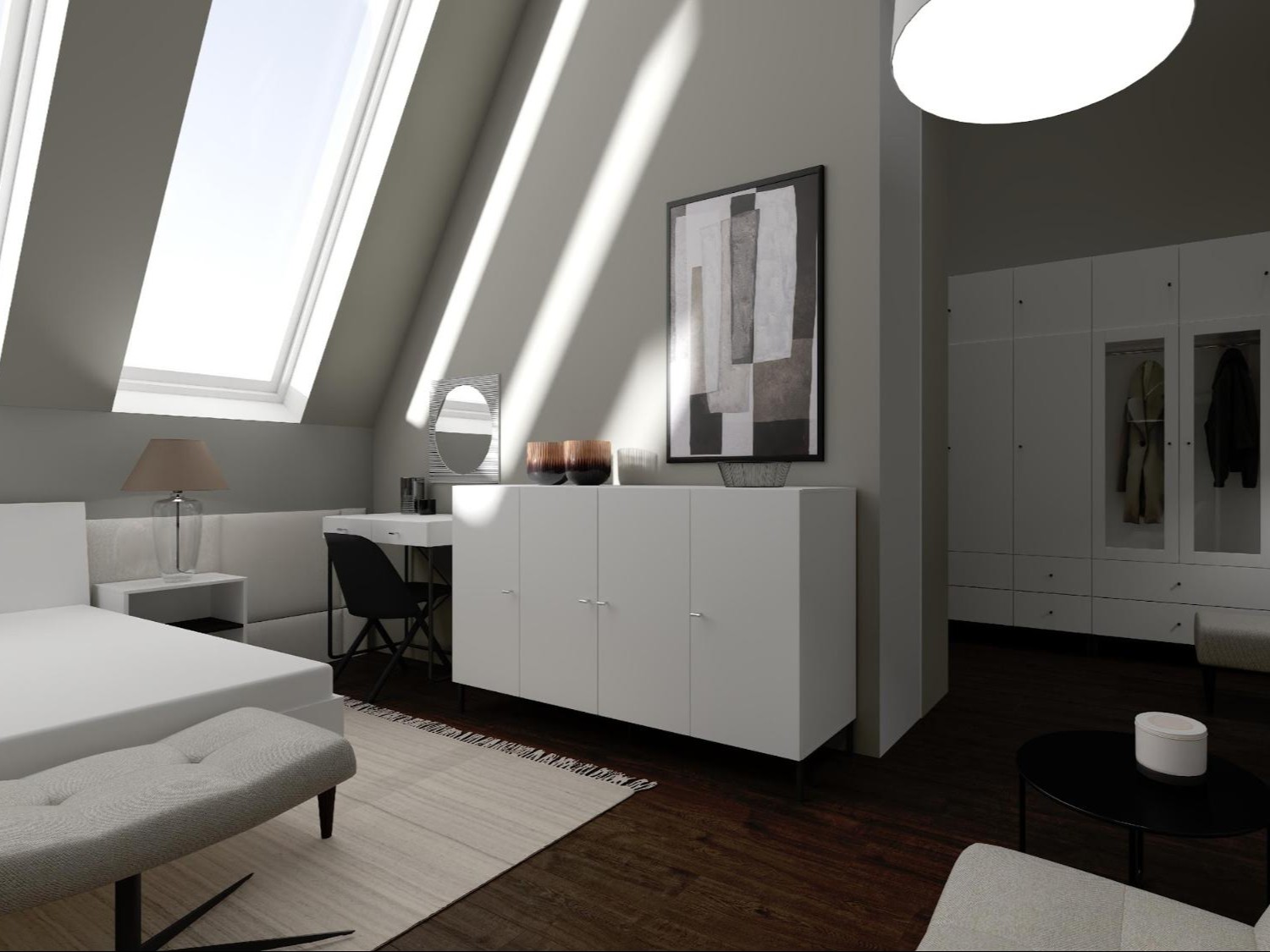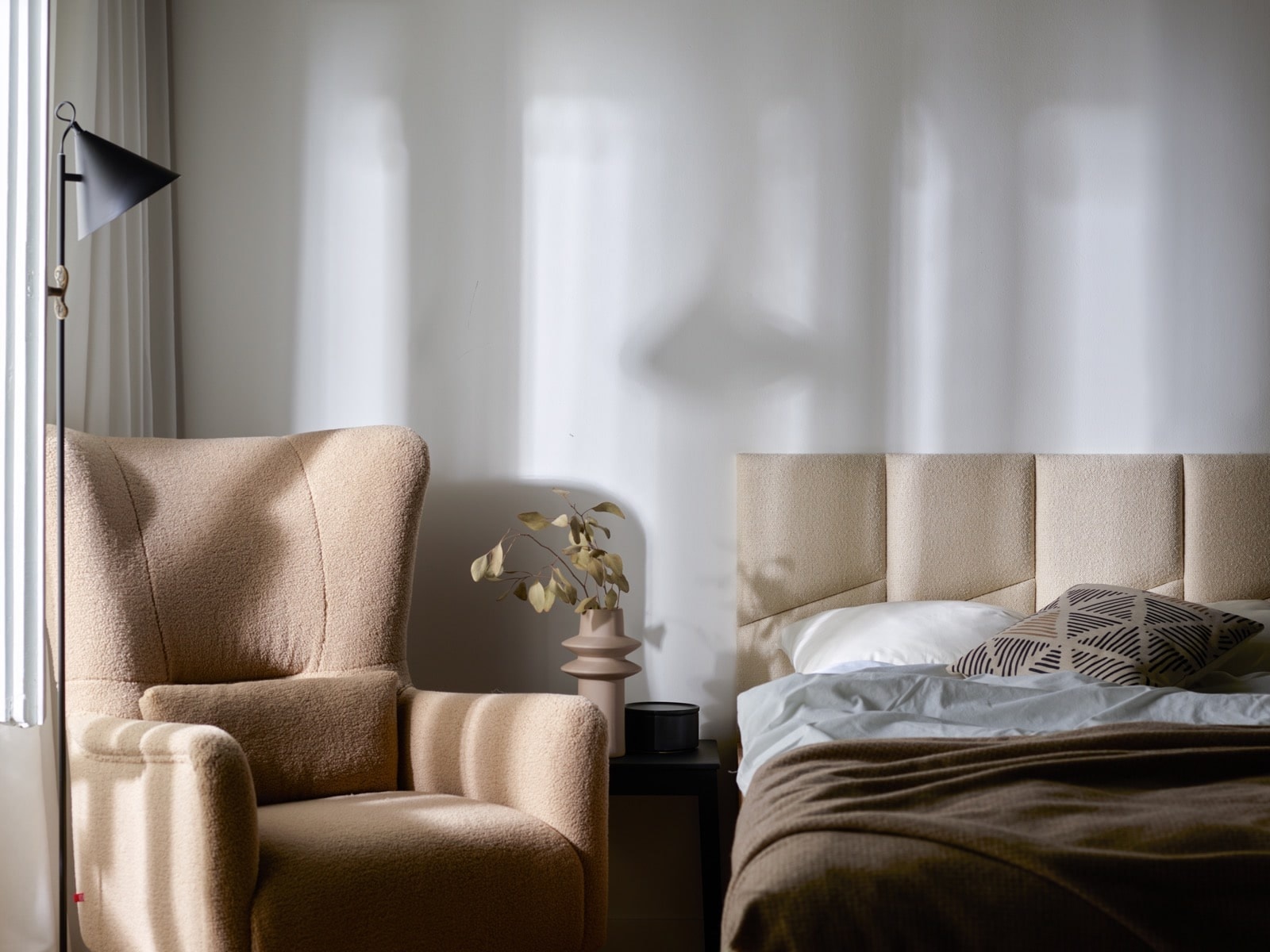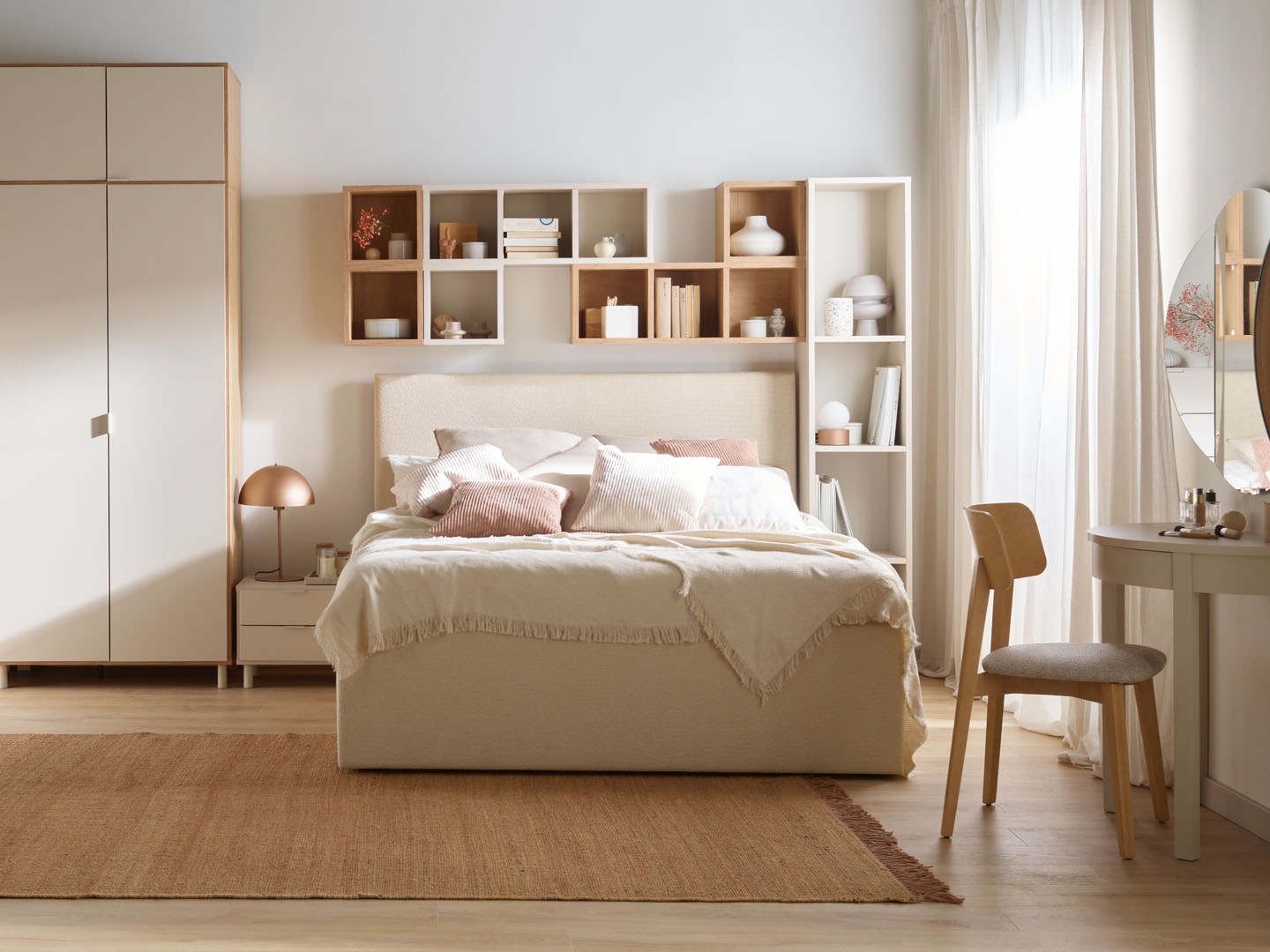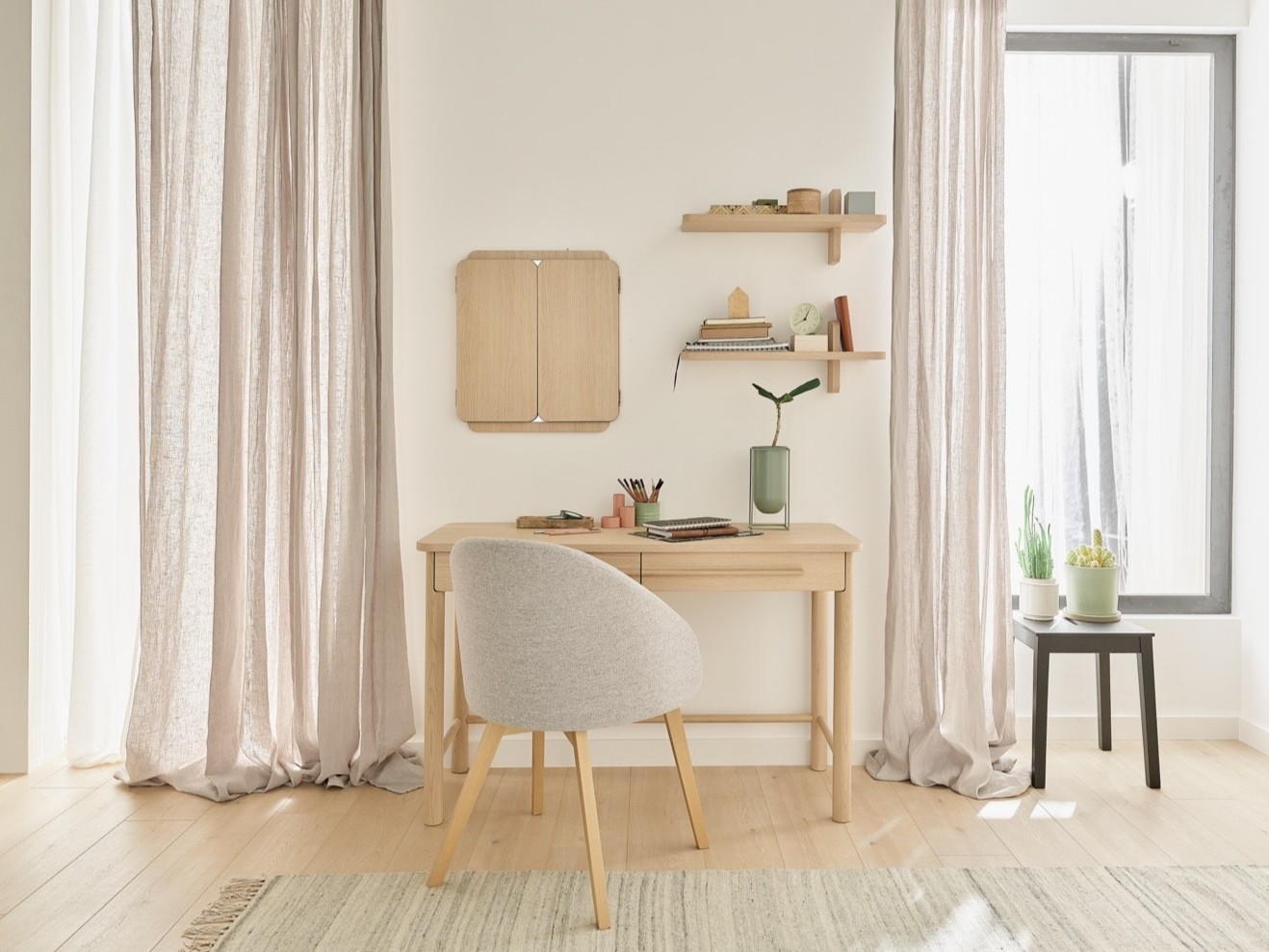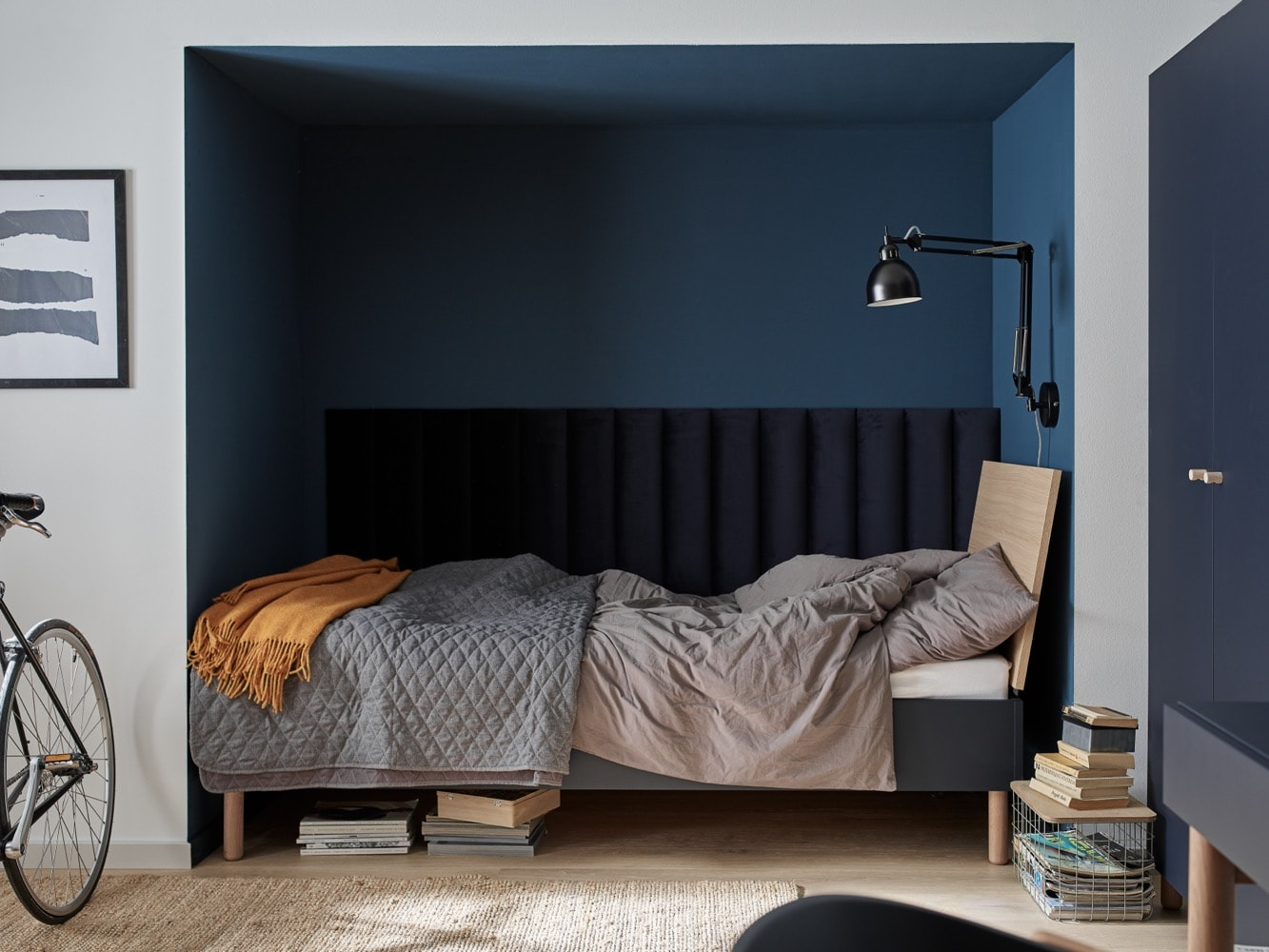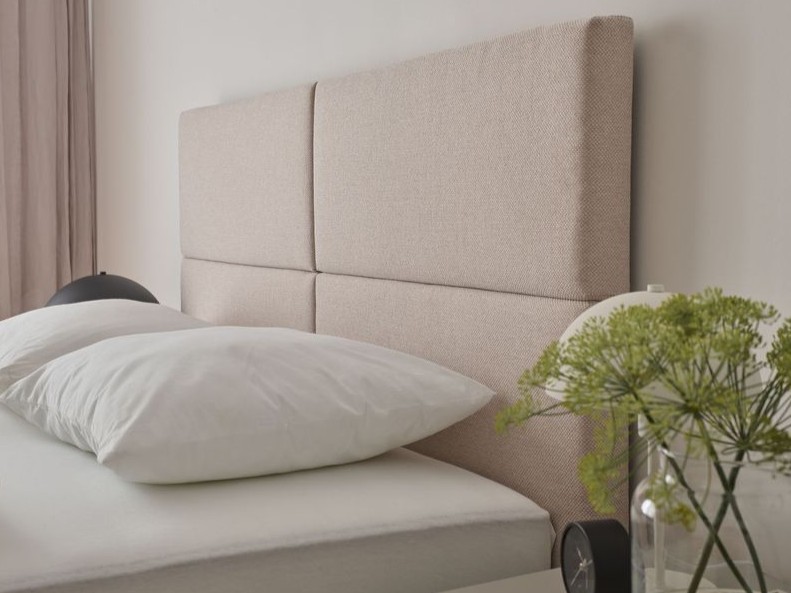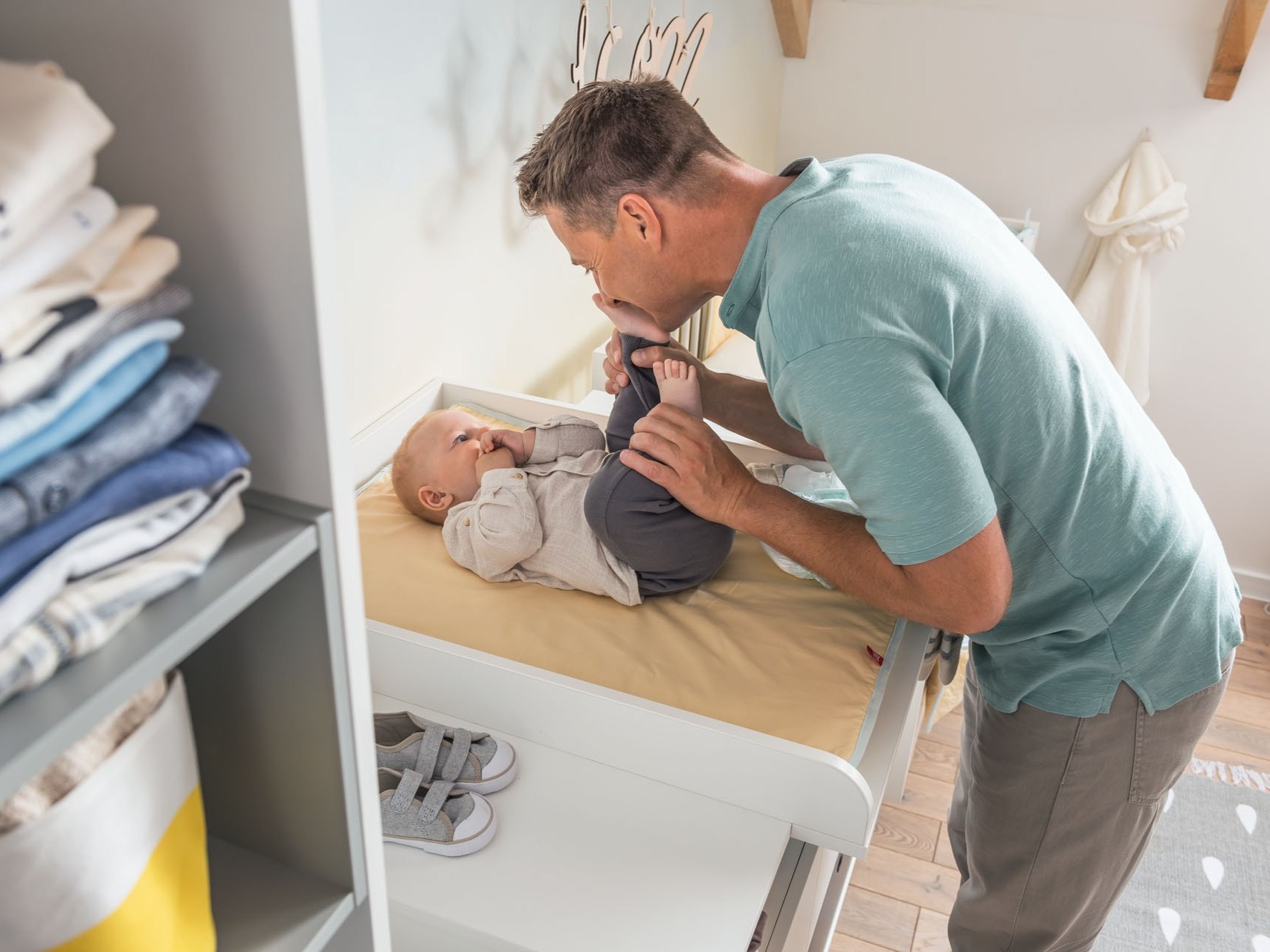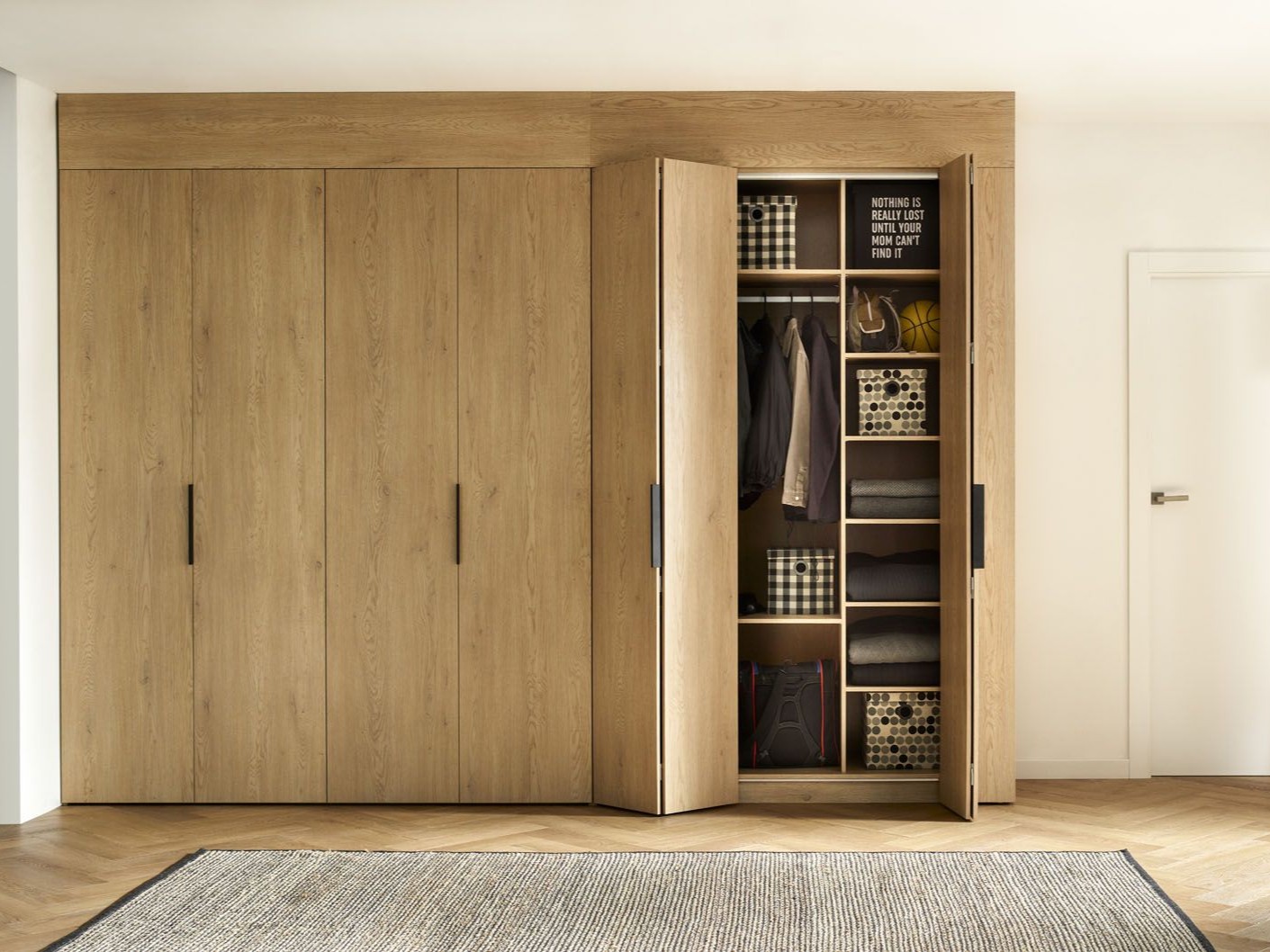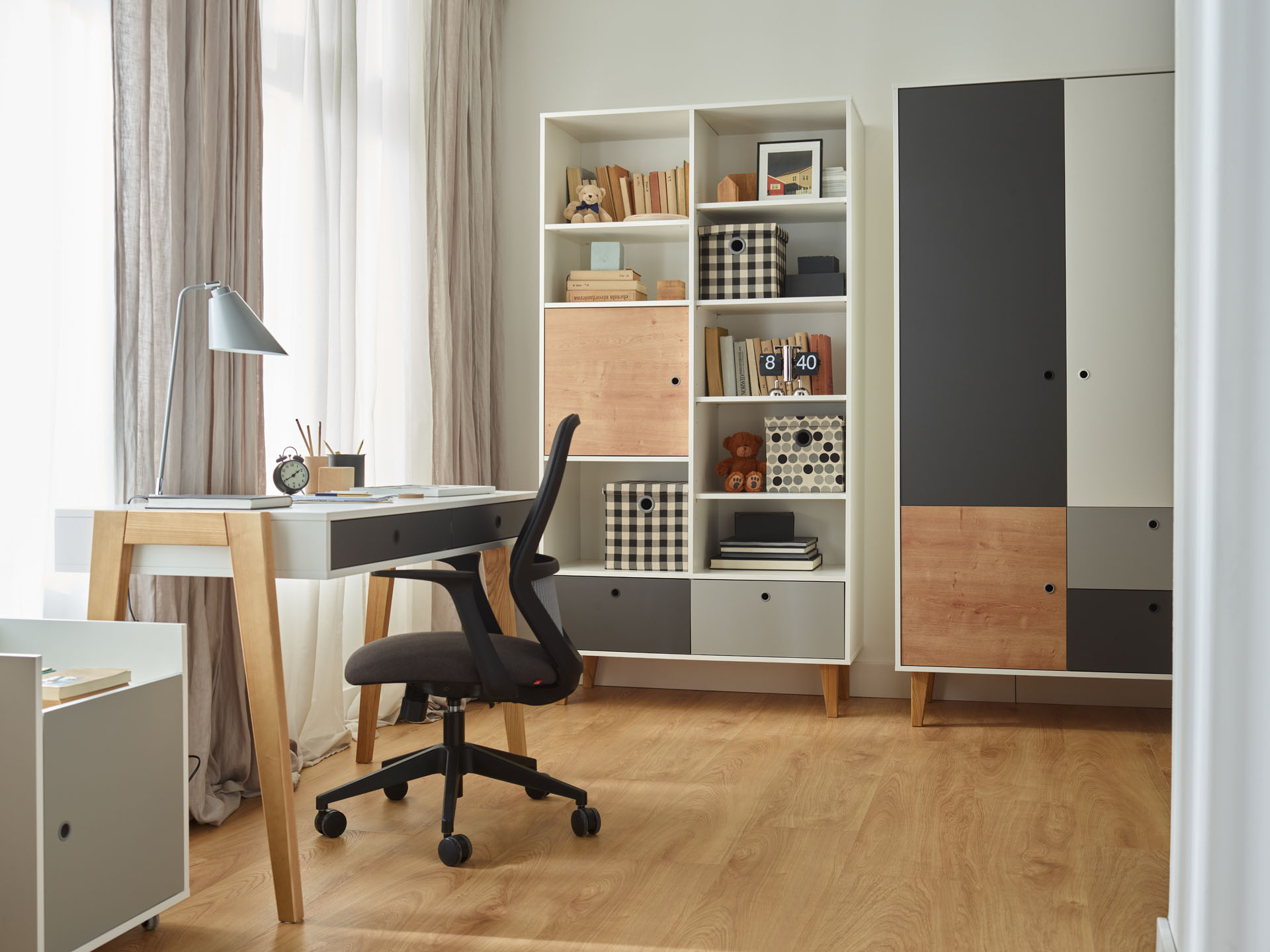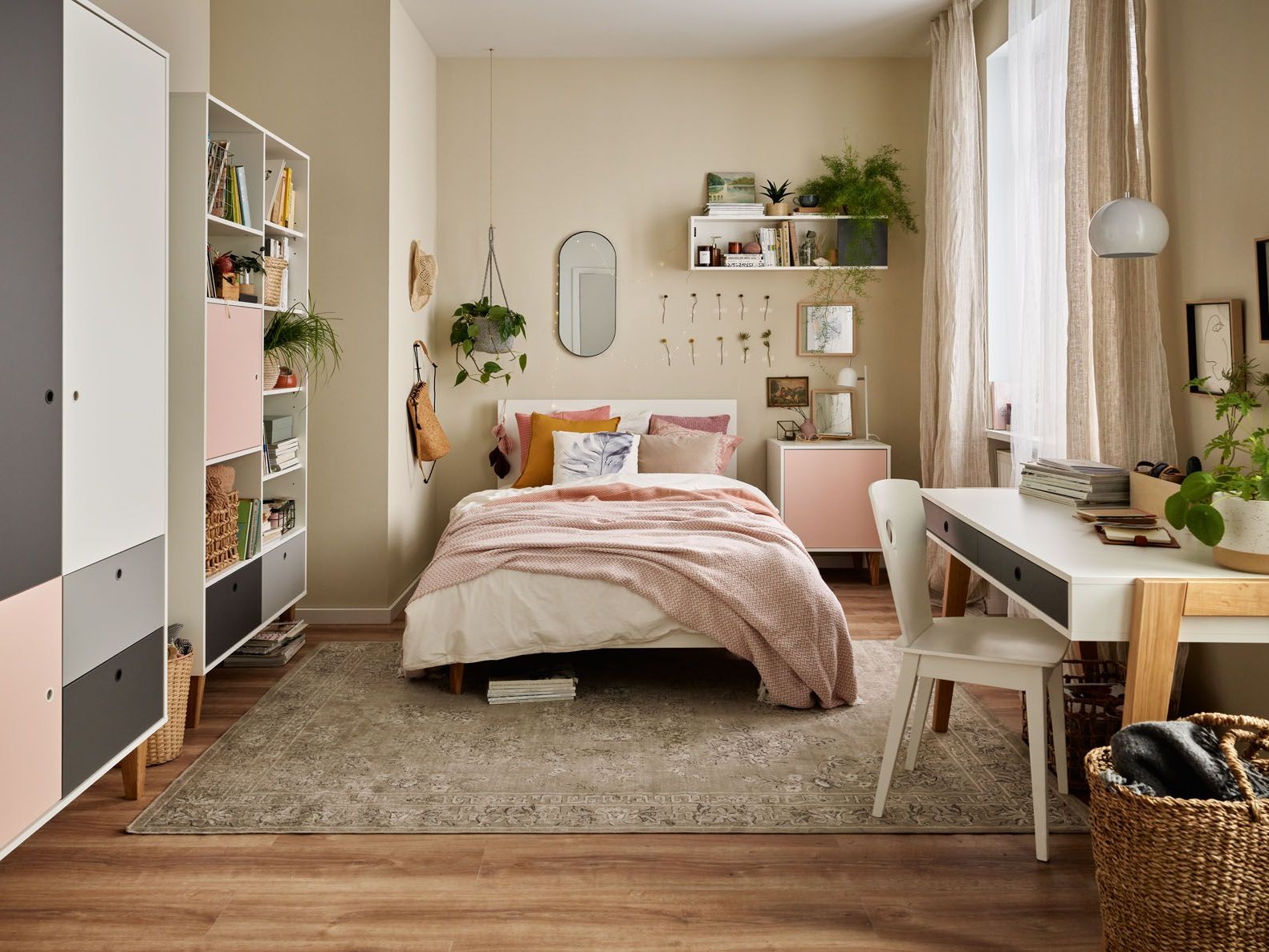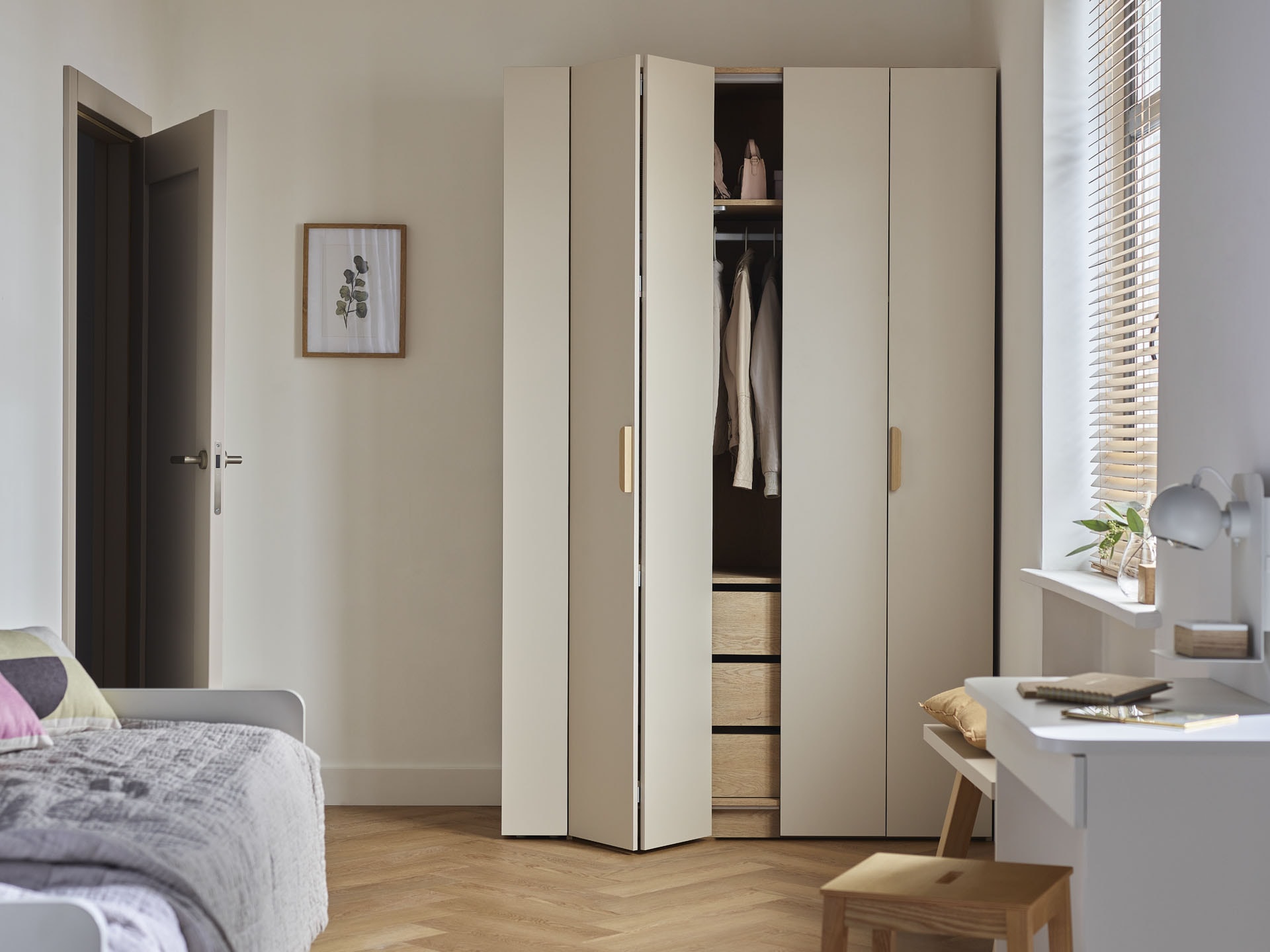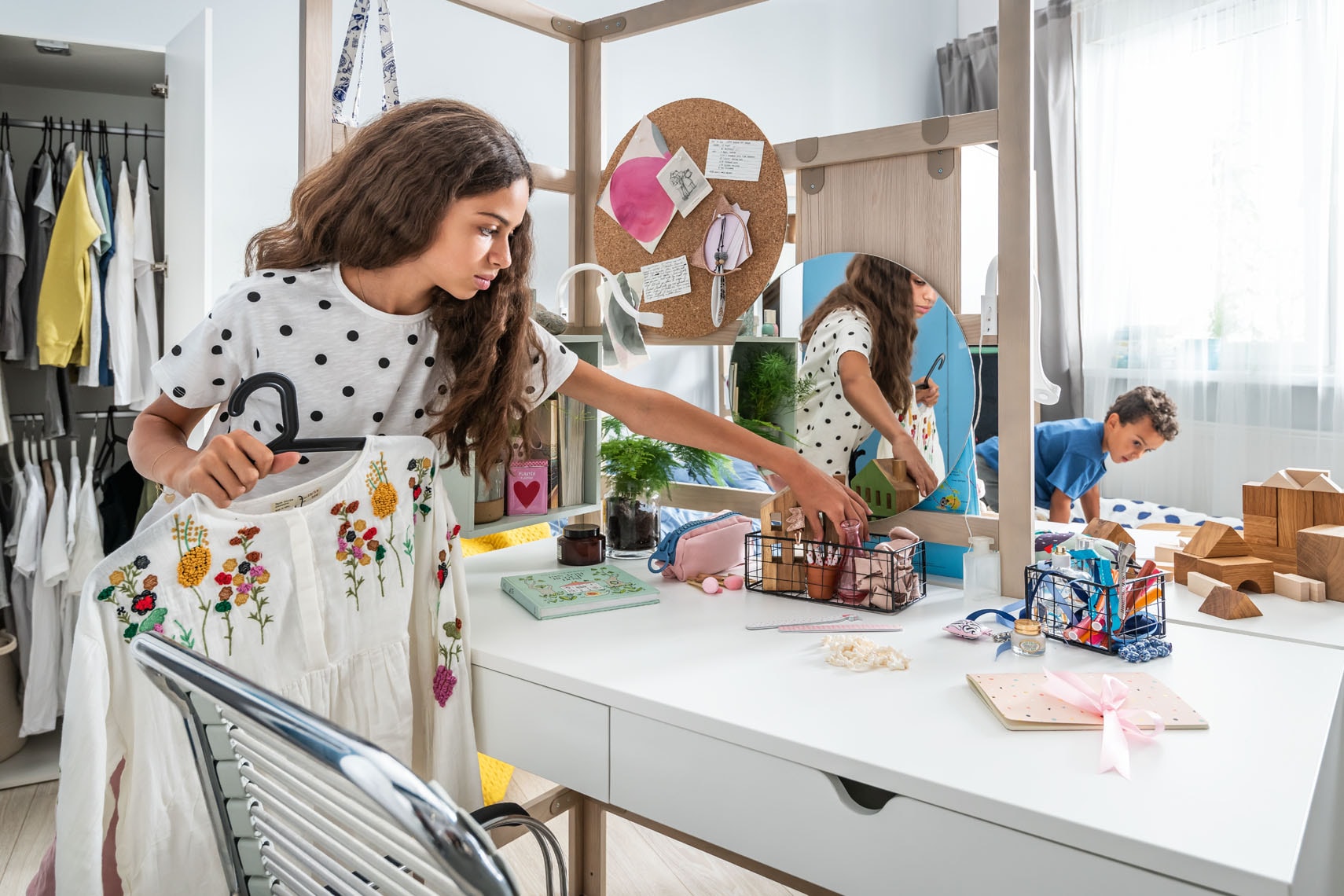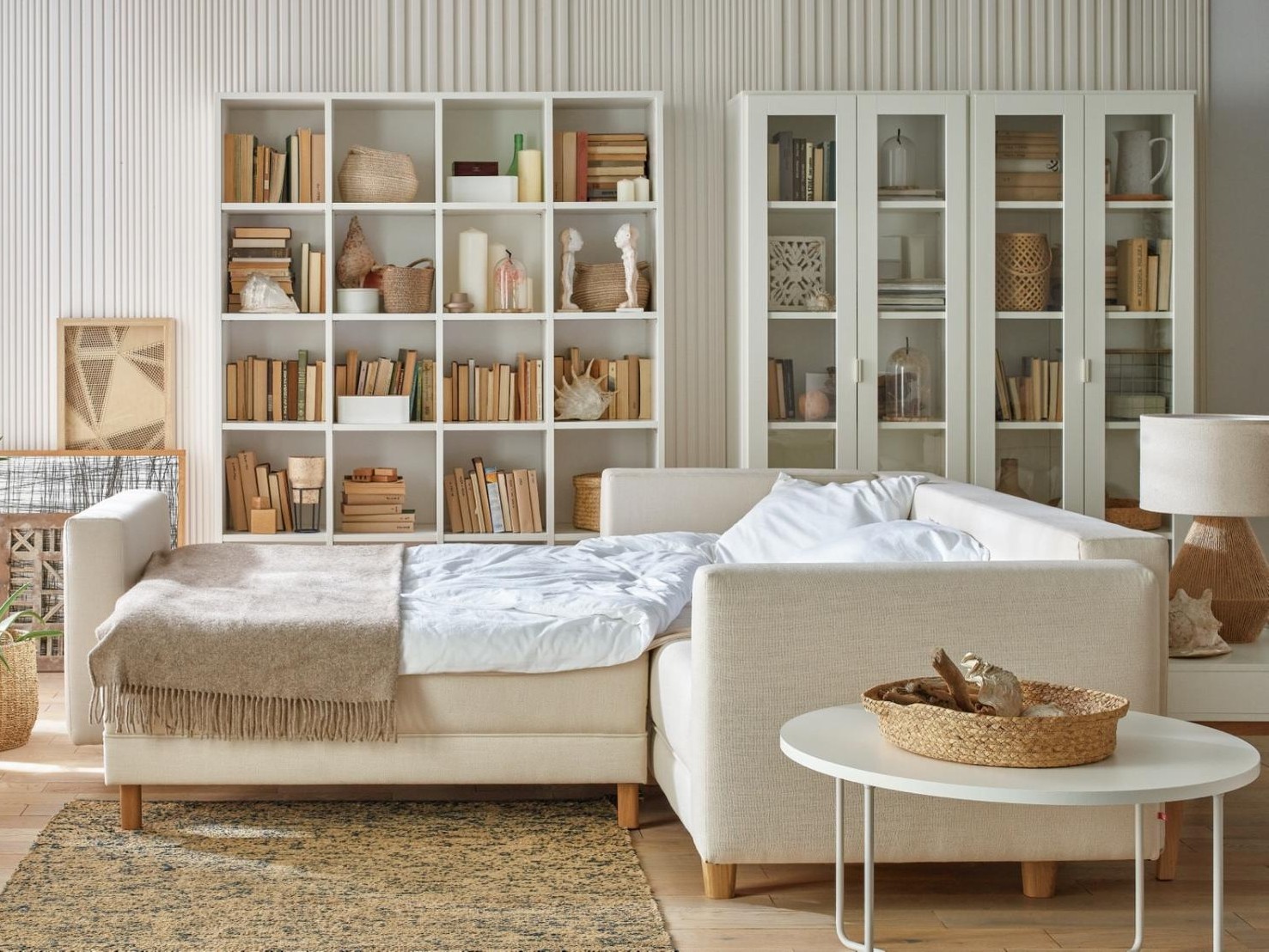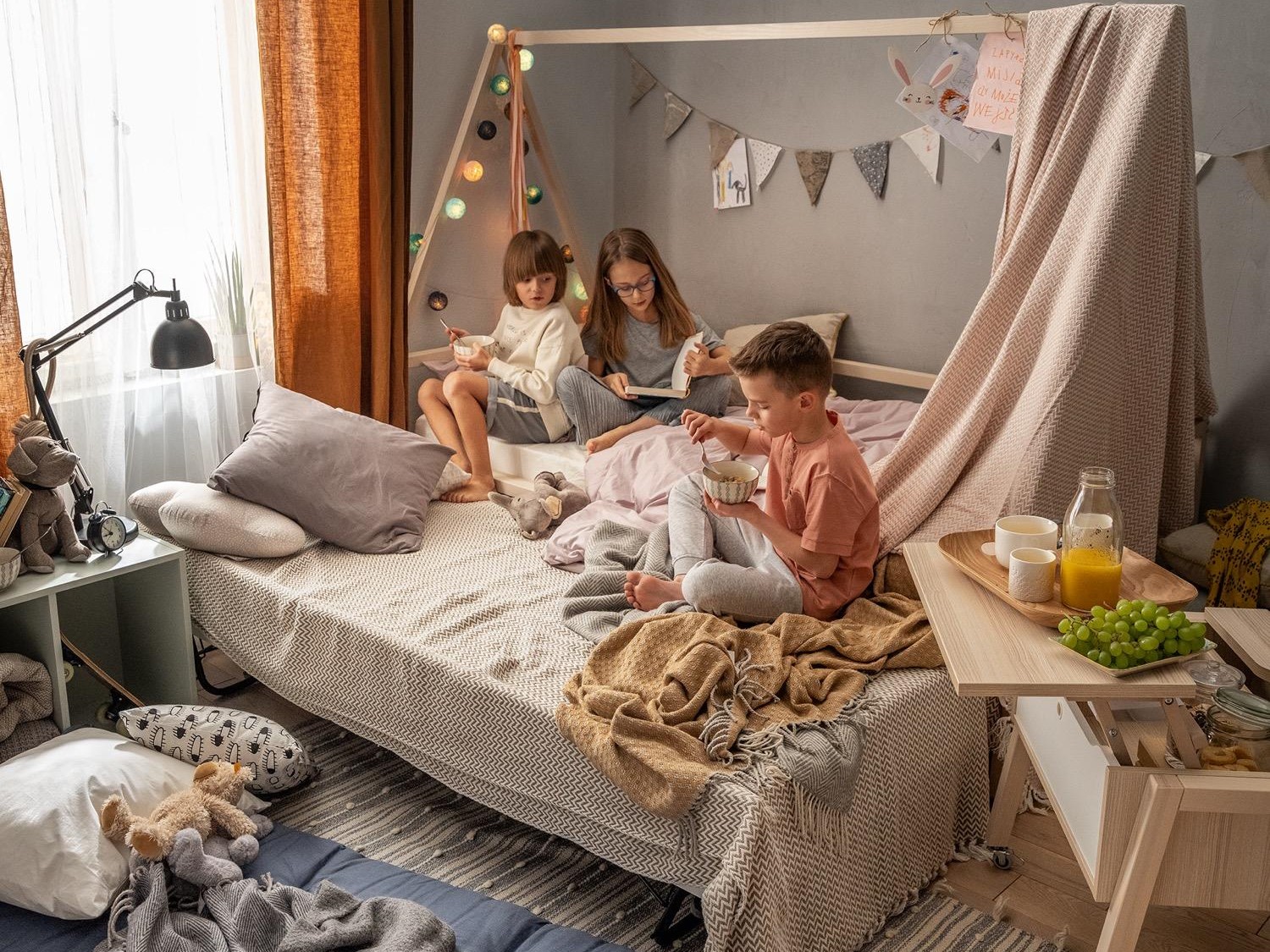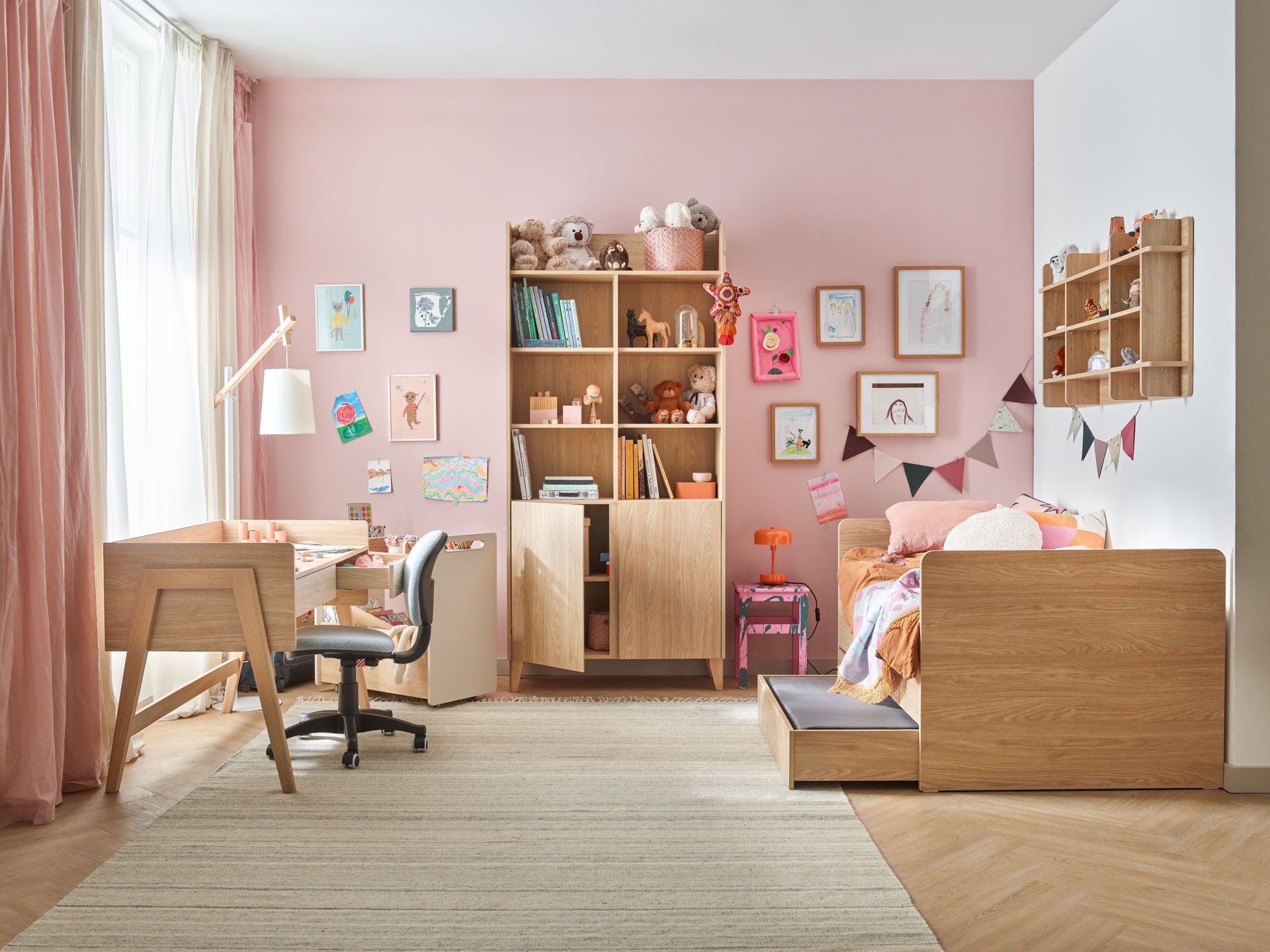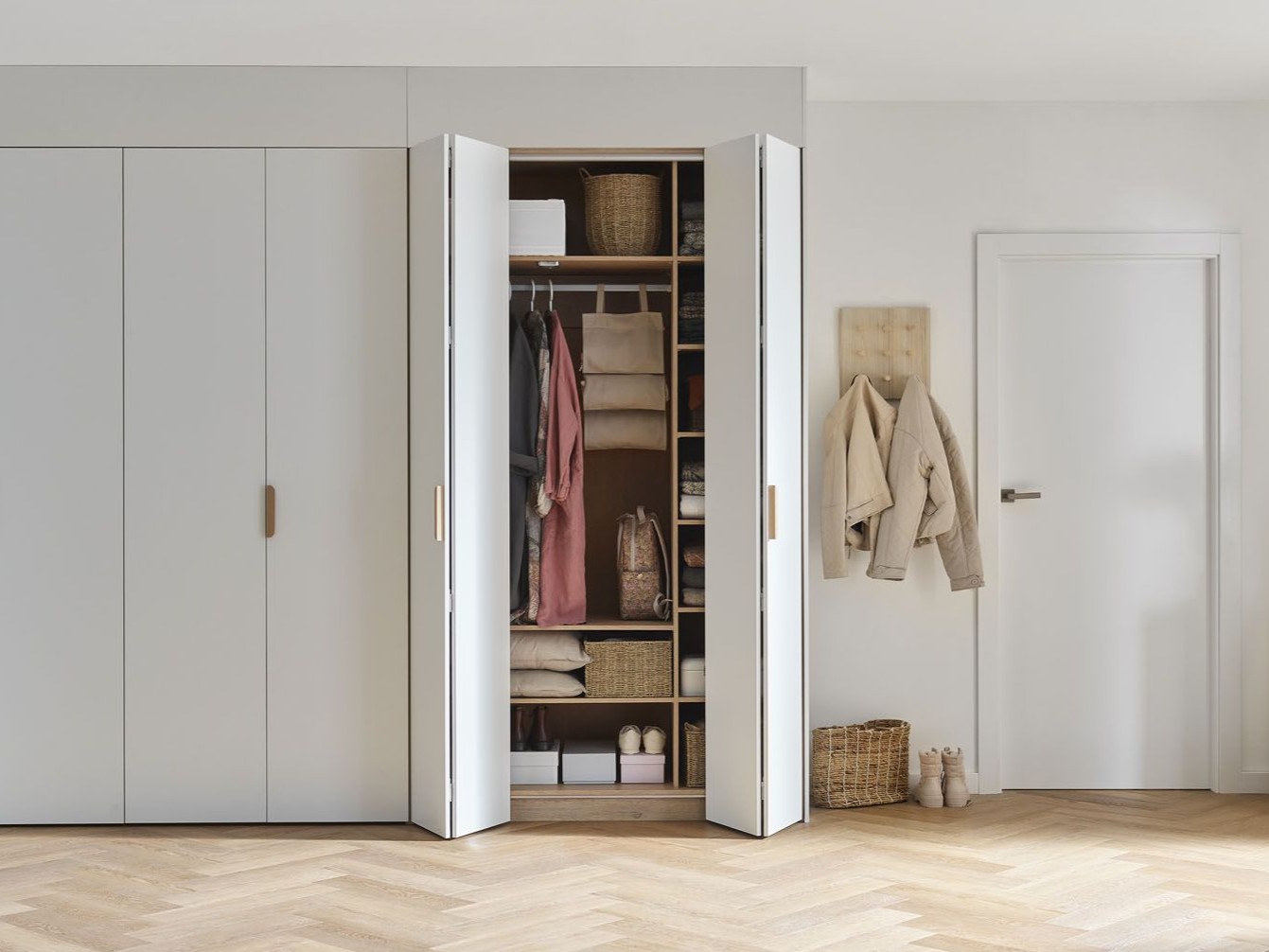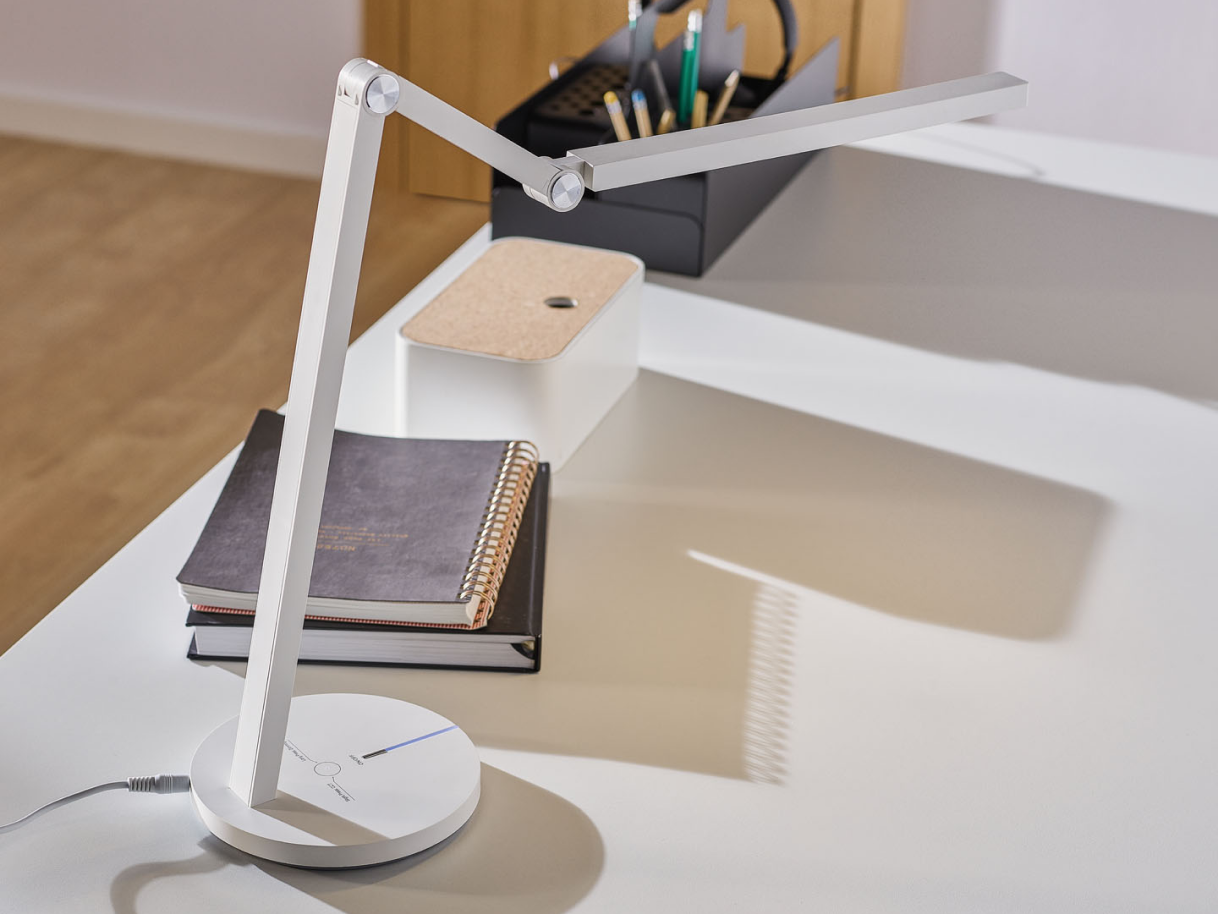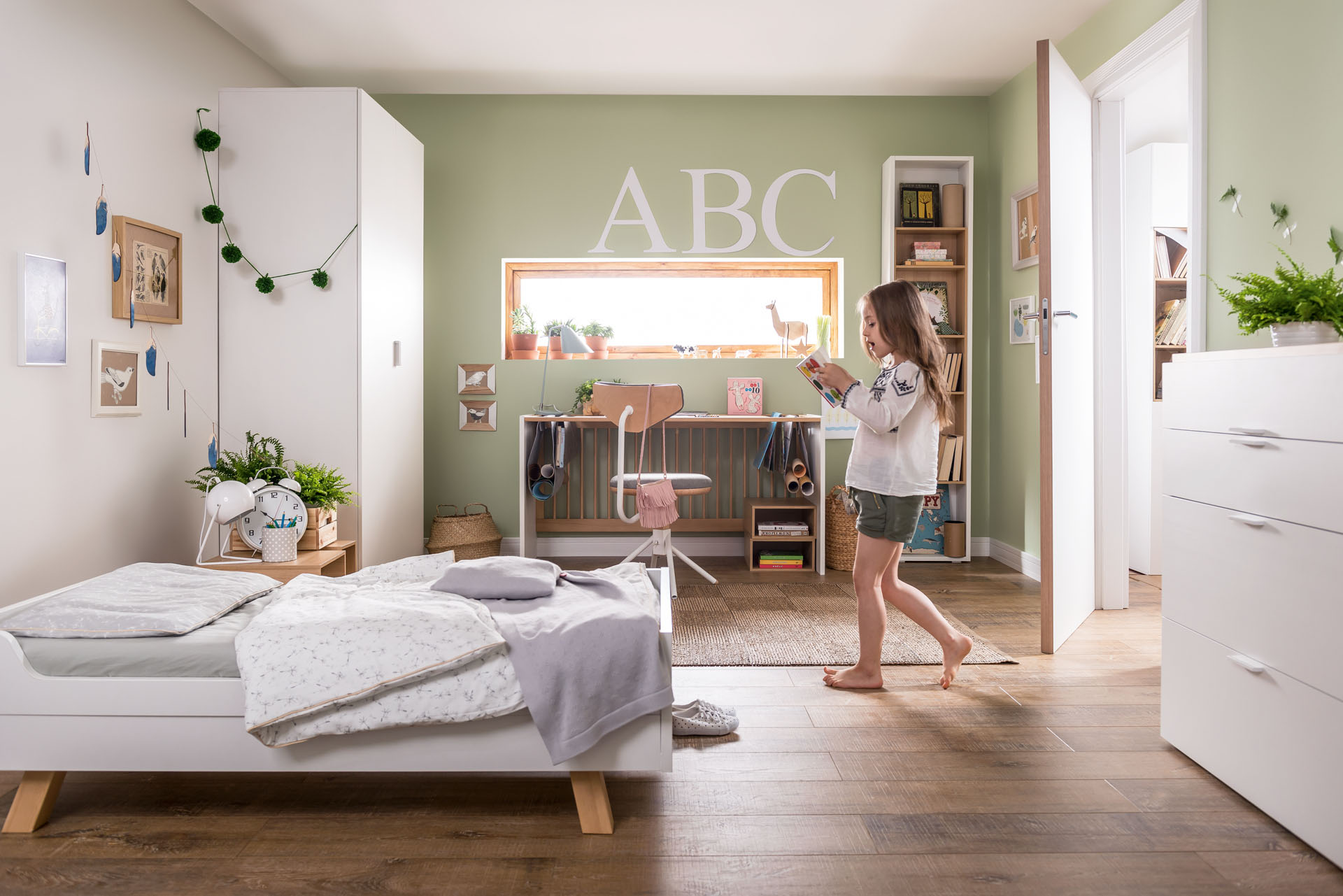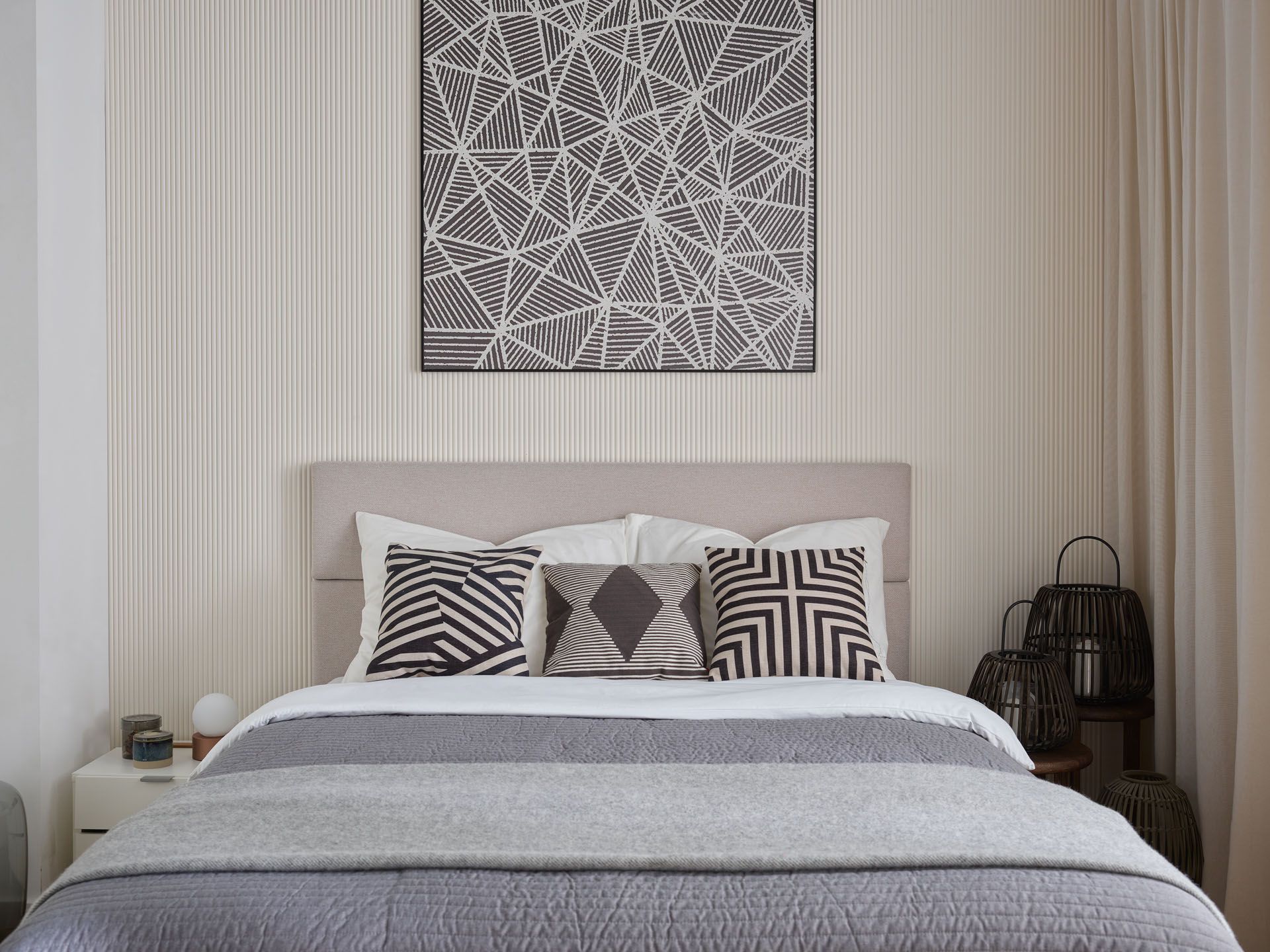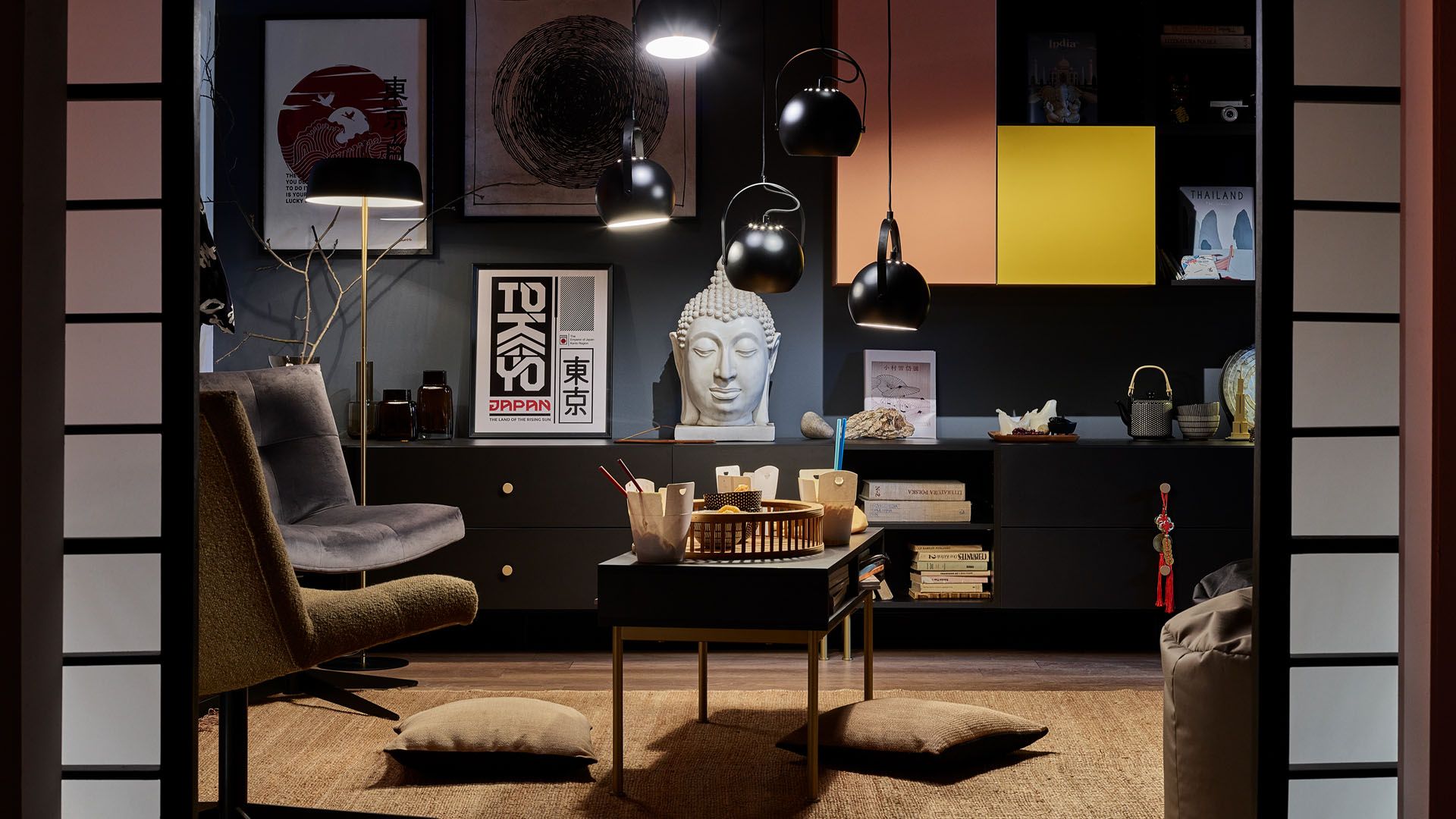Which cot
for a baby? choosing a piece of furniture that grows with your child
The cot plays an important role in building a comfortable and safe corner for the baby. During the first few weeks of life it provides a space for sleeping and playing, and at a later stage it keeps pace with the growing toddler by serving as a place to rest and train his own independence. Which cot is right for the baby?
The choice should be based on the needs of the baby and practical considerations. Aesthetics, although also important, take a back seat to safety and comfort. A cot that grows with your child will be a real treat. A functional and practical solution will not only eliminate the need for another purchase, but will also reduce the stress on the little one associated with changing bedding.
YOUR OWN AND SAFE. WHICH COT FOR THE NEWBORN?
Whether you are arranging a toddler bed in your own bedroom or immediately setting up a separate room for your child, your baby's development space cannot be without some essential elements. These include a functional chest of drawers with a changing table and a comfortable and safe cot. The latter is worth focusing on, as a suitably selected cot will play a major role in the development of the toddler.
The search for the perfect piece of furniture begins with the choice of size, adjusting it to the size of the interior and your needs. The most popular cots are those that can accommodate a 60 × 120 cm or 70 × 140 cm mattress. During the first few days of a newborn's life, the extra centimetres will not make any difference. However, if you want the bed to last as long as possible, choose a slightly larger model.
Read more about which mattress to choose for your baby.
A traditional baby cot has distinctive rungs, which should be made from safe raw materials. The children's furniture available in the VOX range meets European norms and safety standards, and no toxic paints or varnishes are used in its production. The openwork frame of the cot additionally ensures proper ventilation and air circulation, which reduces the risk of allergies. Comfortable use of the cot becomes possible when the furniture has various levels of adjustment which allow the height of the base to be matched to the child's stage of development.
Caring for a toddler requires maximum focus. When planning the space for your newborn, make sure that everything you need is within easy reach. The Veli cot has been fitted with a roomy drawer to accommodate changing clothes, nappies or care products. The storage space will change with your child - over time it will fill up with toys and favourite books. For handy storage, there are also organisers made from pleasant-to-touch cotton that can be hung on the cot's frame.
BEDROOM WITH EXTRA BED. WHICH COT TO CHOOSE FOR YOUR BABY?
A toddler needs the closeness of his parents from the first minutes of life. Nothing calms him more than a heartbeat, a warm touch and the soothing voice of mum and dad. This is why we very often decide to spend the first nights together. However, sleeping in the same bed with a baby raises many concerns. Some believe that sleeping together may not only be uncomfortable, but also risky.
So if you want to be close to your baby and at the same time provide him with a safe, separate space, choose an extra bed. In the Simple collection, you can decide on the colour of the headboard and frame, as well as the type of legs. The possibility of completely removing the chosen side means that parents can be close to their little one without having to get up even at feeding time. A simple piece of furniture converted into a couch will fit into both the adult bedroom and the child's later room.
You may be interested in: Bedroom with baby. How to create a shared space for parents and toddler?
The presence of a new member of the family significantly affects the bedroom décor. Which cot for the baby will best fit into the arrangement? The 4 you model can later be converted into a couch and a desk for creative play. So when you buy one functional piece of furniture, you get three.
MUMMY, DADDY: I'M GETTING UP! WHEN TO LOWER THE COT?
A child develops quickly. Activities that until recently were very difficult for him, the next day can be a lot of fun. This is why it is important to choose furniture that can keep pace with the constant changes. A height-adjustable cot will enable you to lower the mattress another level when your little one starts to stand up and sit down on his own. An adjustable cot is also a safety issue. The rail will provide a point of support for your child, but will also protect them from falling.
The Muve cot will adapt to the big changes your little one is ready for. Three levels of floor height adjustment will allow you to adapt the furniture to your current needs. The highest level is reserved for babies and will also prove beneficial for mum's back. The middle level is ideal for toddlers who can sit up on their own, and the lowest level for children who are already trying to stand up on their own by holding onto the rungs.
But when is the best time to lower the cot? It's worth keeping a close eye on your little one, as every child develops at their own pace. Some toddlers already start to raise and sit up on their own at around 7-9 months of age.
WITH A VIEW TO THE FUTURE - A COT THAT GROWS WITH YOUR CHILD
During the first few years of life, the baby is constantly developing and this means that his environment also needs to change. After the upright stage, we may see the little one begin to perfect the art of walking and then climbing. An existing piece of furniture may therefore prove unsuitable for a toddler who wants to be independent. A cot that grows with the child and adapts to the child's needs will meet this challenge.
As soon as you notice that the toddler is trying to climb over the railings or is moving his leg over the railing, it is worth enabling him to leave the bed on his own. Escapades will be facilitated by a model with removable rungs. The Vintage Fresh cot will also serve its purpose in the later months of life. Like the Lounge cot, it has the option of converting it into a couch for an older child - simply remove the sides and lower the top of the bed. The timeless oak piece of furniture will first harmoniously fit into the design of the bedroom and later the children's room.
THE BIG BABY STEP. WHEN TO CHANGE FROM COT TO BED?
A cot that grows with your child will provide a comfortable sleeping space in the first years of life. A complete change of furniture will therefore not be necessary, thus saving your little one a lot of excitement about changing bedding. The cot can be converted into a couch in most models available in the VOX range, such as the Concept or Sande cots.
Which bed is suitable for a 3-year-old or 4-year-old depends on the stage the toddler is at. It may be advisable to buy a youth bed even then, which will serve the child until the late school years. The best guide when making changes will be vigilance and careful observation of your child.
Experts and psychologists do not have a clear answer to the question of when is the best time to change from a cot to a bed. Every toddler develops at an individual pace and, like adults, may have their own preferences. One thing is certain - the purchase of a new bed is a major event in a little one's life, and one that is well worth preparing for.
To minimise the accompanying stress, let's approach the subject holistically and let the toddler help furnish a cosy sleeping nook. Let your child choose their own colourful bedding, pillows and other accessories. And don't forget to move the cuddly toys that your little one falls asleep with.
Adapting to the new conditions will come easier to the child if we continue the daily rituals for a while. Reading books together, listening to lullabies or falling asleep next to one of the parents will make the baby feel secure. He will sleep peacefully through the night and the next day will proudly tell you what he dreamt on his new bed.
You already know which cot to choose for your baby. You may also be interested in: What for the wall next to your baby's bed? Ideas for protecting the wall.



